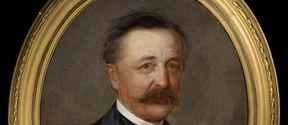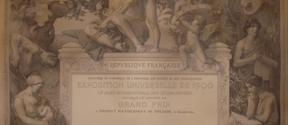The curriculum of the Technical School of Helsinki was changed in 1858 to correspond to a new approach to engineer training that emphasised science. While in the immediate aftermath enrolment collapsed, it would soon begin to gradually grow again.
The highest level of technological education was rapidly raised as it became more theory-based, which led to discussions on reorganising the education of practical skills.
Frans E. Conradi and Theodor Lebedeff, the directors of the technical schools in Vaasa and Turku, travelled to Central Europe in 1863 to study the methods of vocational training. They submitted a proposal to develop practical education separately from the technical colleges.
The feudal corporation system and its traditional education system for craftspeople and small-scale industries was abolished in Finland in 1868 as part of industrial law reform. Industrial workers were left without practical vocational training, and a fear arose that old craft skills would be forgotten in the wake of industrial mass production and the unilateral design it was associated with. At the same time, new avenues of training were being sought for industrial professions that required special expertise, such as machinists and master builders.
Beginning of craft education
The ideas that led to the creation of craft education were borne by international currents. These ideas included the concept of a national craft industry. The English Arts and Crafts movement, which strove to raise the importance of traditional crafts, is considered an early example of this new way of thinking. The Arts and Crafts movement led to the birth of the Art Nouveau and Art Deco styles. However, the founders of applied arts in Finland found their role models primarily in the German sphere of craft education.
Professor of aesthetics and modern folk literature Carl Gustaf Estlander discussed opportunities for developing applied arts in Finland in his 1870 text Den finska konstens och industrins utveckling hittils och hädanafter (Development of Finnish art and industry until now and hereafter).
An initiative for launching a new educational institution was drawn up under the leadership of Professor Zachris Topelius in September 1870.
At the founding meeting of the Helsinki craft school, a number of experts in industrial education were named to the school's board, which was headed by Estlander. These included Edwin Bergroth, an engineer who influenced Finnish engineer training in the early 1860s; Lars Johan Källström, the alderman of the painters' profession in Helsinki; August Fredrik Soldan, engineer and director of the mint; Sven Petter Dahlbeck, a chemistry teacher at the Turku technical school; August Bade, manager of the Osberg & Bade workshop in Helsinki; and Richard Theodor Heimberger, owner of a furniture and carpentry shop in Helsinki. Thus the board came to comprehensively represent all branches of applied arts.
The first director of the craft school was Källström, a true pioneer in formal arts education in Finland. As early as 1846, he had opened a private visual arts school within his workshop in Helsinki together with Swedish painter Erik Lindh.
After the founding period of the school had ended, Källström left the director's position to his son-in-law Florentin Granholm, an architect.
Growing in harmony
The school opened its doors without delay, on 11 January 1871. The school's operations were soon embroiled in controversy due to high-handed behaviour on the part of Källström, who acted as treasurer. Källström and Estlander, with support from Osberg and Bade, took measures to keep the school open. The following year, the Finnish Society of Crafts and Design was founded to support the school, which would operate under the society's supervision. Rooms for the school were acquired on Mikonkatu.
In 1881, a school for machinists, foremen and master builders was opened in the same building. Four years later, the craft school was turned into a government-funded school for applied arts.
A new building, Ateneum, was completed in 1887 next to Railway Square. The building's facade bears the words Concordia res parvae crescunt – 'small things grow in harmony'.
Over the years, the craft school evolved into the University of Industrial Arts and Design, one of the three universities that combined to form Aalto University in 2010.

